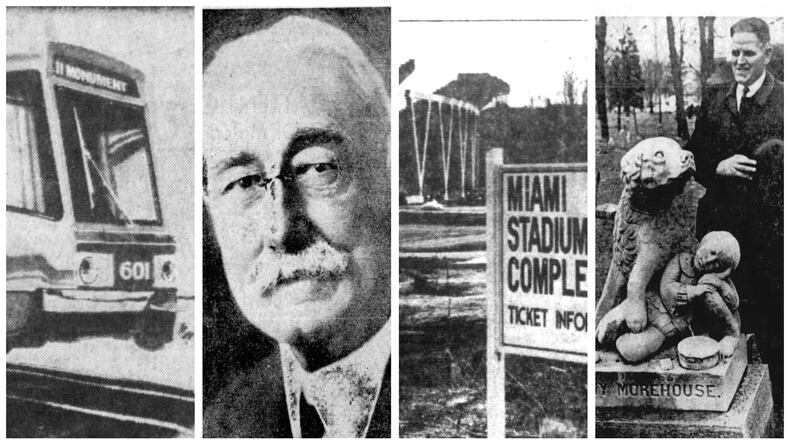Here’s a look at some stories from the week of Dec. 1-7.
Dec. 3, 1932: 87th birthday anniversary observed by Thomas Elder
It was just another day at the office for Thomas Elder, who was celebrating his 87th birthday in 1932.
Elder followed his usual routine of spending a half hour in late morning in the office and then taking an afternoon drive.
Elder started from humble beginnings but later became one of the most successful businessmen in the Midwest, pioneering department store development in Dayton.
The Elder & Johnston Co., of which he was president and general manager, grew from the store he established on East Third Street 48 years prior. The Elder & Johnston Co. became incorporated in 1905.
“Work,” he once said, “is my rule of life. One must keep in the game in order to remain young and alert.”
Dec. 2, 1942: Typewriter conservation campaign to be launched
During World War II, conservation efforts included metal, gasoline and, among other things, typewriters.
The government was in need of 500,000 typewriters, and it called on local companies to donate them.
In Dayton, a meeting was called by the Dayton Chamber of Commerce to inform business executives with the best methods of conserving typewriters.
During the meeting, the Dayton chapter of the National Office Management Association laid out 45 approved methods for simplifying office procedure so that every fourth machine could be turned over to the government.
Topics for the discussion included, “Work Simplification,” Reduction of Idle Time,” “Substitution of Other Office Methods,” and “Simplification of Equipment.”
Dec. 6, 1962: Legends shroud stone boy, dog at Woodland Cemetery
What is the real story behind the monument of a boy and a dog in Woodland cemetery?
Probably no one will ever know for sure. The statue labeled “Johnny Moorehouse, In Slumber Sweet,” had been drawing speculation for over 100 years by the time of this 1962 article.
The monument is located not far inside Woodland’s main gates and depicts a small boy, his dog and his top, ball and hat in great detail.
“People comment on it all the time,” cemetery manager James Moist said at the time. “But we’ve never been able to find out the actual story behind it. There are no dates on the monument, but Johnny was supposed to have been 5 years old when he died in 1860.”
There were several legends circulating about the monument, including one that claimed the dog had rushed into a river to save the boy and they both drowned together. The items shown around them were things found in the boy’s pockets.
Dec. 3, 1972: Streetcars returning after years in museums
In 1972, the idea of electric streetcars was having a revival, and a study was underway to see if they might be a good option for Dayton.
Streetcars were still in use in Pittsburgh, Cleveland, New Orleans, San Francisco and Boston.
The Dayton Area Rail Transit group convinced the U.S. Department of Transportation to study the feasibility of using the Penn-Central railroad between Dayton and Centerville for a light rail system.
The purpose was to relieve rush-hour congestion and cut down on air pollution.
The design of the system included cars about 140 feet long and eight feet wide, equipped with three double doors on each side, and the capability to carry 219 passengers at speeds up to 55 miles per hour. Double-ended, it could travel in either direction. The cars could operate singularly or in trains up to four cars.
Dec. 1, 1982: Miami Field gone; new complex awaits fans
The goal posts at the aged Miami Field had been torn down. The weather-worn wooden time clock had been shipped to the Football Hall of Fame. But memories remained of the field first used in 1896.
The fans, averaging 18,000 to 19,000 a game, had outgrown Miami Field and its 14,000 seats long ago.
Miami University was building a new sports complex that included a 26,000-seat stadium.
The $12 million complex over 17 acres was to also include softball, field hockey, and soccer fields, an outdoor track and three practice fields.
The project was in line to be finished for the first football game of the season, Oct. 1, 1983.
The stadium was to be named after Fred C. Yager, a 1914 alumnus and Dayton businessman who donated $2 million towards the complex.
About the Author






